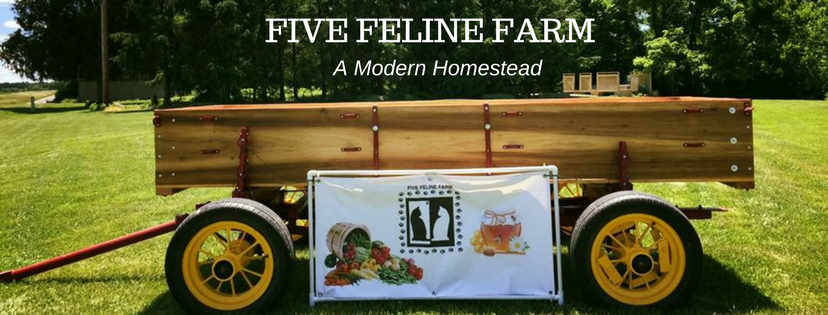Five Feline Farm is a blend of old and new. We maintain a respect for history and the skills of our ancestors, but definitely appreciate the new approaches.
For example, ice cream.
People have been making ice cream since 200 B.C. with fruit, cream, nuts and various sweeteners frozen together. There is ice cream, sorbet, gelato, frozen yogurt and sherbet just to name a few. No matter the name, all required some method of freezing ingredients into a refreshing dessert treat.
Most families recall hot summer days with a hand cranked churn, layers of salt and ice around the center urn of sweet flavored cream. People took turns cranking the handle until the mixture was frozen stiff and could no longer be moved. A few hours packed in a fresh bed of salted ice, then out came the spoons.
Eventually someone invented an electric ice cream churn to eliminate the hard work of turning the crank.
Even better came the invention of a counter top, electric compressor small batch ice cream maker. In just about an hour, with minimal preparation, a quart of ice cream is ready to eat.
We’ve come a long way.
Now here on the Farm we experiment with flavors. An hour and a quart is a perfect match to try out new flavor combinations. The latest favorite is Toasted Almond Honey. Simple straightforward ingredients. Cream, milk, honey, sliced almonds, a pinch of salt. No preservatives. Nothing included that can’t be pronounced.
Toasted Almond Honey Ice Cream
Makes 1 quart
2 cups whipping cream
3/4 cup 2% milk
1/2 cup raw honey
pinch salt
1/2 cup sliced almonds
Stir together cream, milk, honey and salt until thoroughly blended. Add to 1 quart tabletop ice cream freezer and freeze according to manufacturer directions. Toast almonds in small skillet over low heat, stirring frequently until lightly browned and fragrant. Add almonds during the last 15 minutes of freezing or when machine indicates additional ingredients can be added.
Yes this is a high fat dessert. It is a treat to be enjoyed in moderation and well worth the calories.
If this type of experimenting in the kitchen suits you, stay tuned. There is more to come from the Five Feline Farm kitchen.









